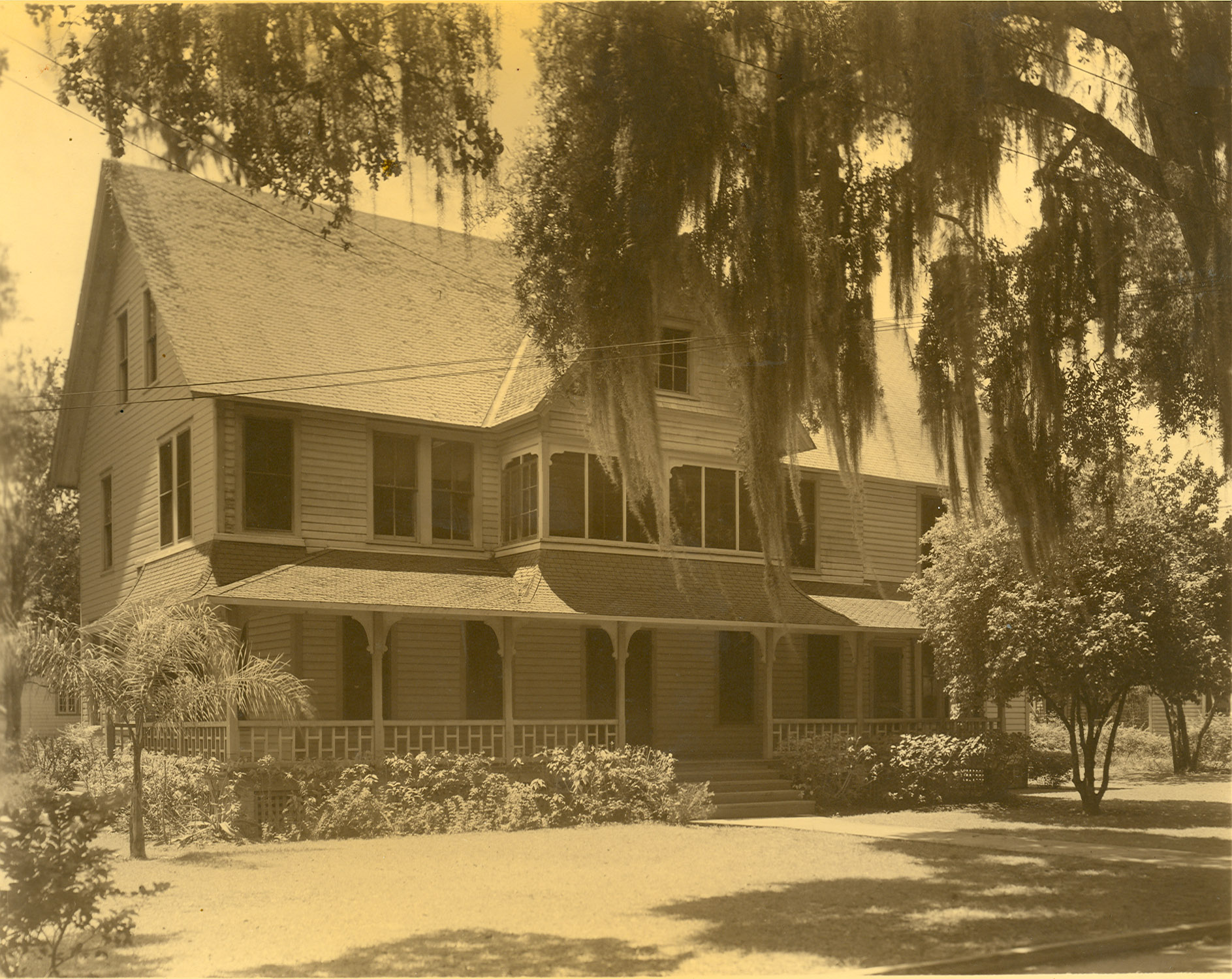Sparrell House

Sparrell House was a two-storied, cottage style home with a center gable and veranda porch. Gable refers to the triangular portion found at either end of a pitched roof; it’s what occupies the space between the two slopes. Sparrell had two gable end chimneys with a corbelled chimney cap. Found in the front of the house is a wall dormer, which essentially created headspace and a central axis to the house. In addition to flat windows in a double-hung sash style, fixed windows were found on the wall dormer. The windows were paired throughout most of the house. The porch covered most of the façade, featuring a veranda style with squared corners and open rails.

Donated by E. A. Sparrell to the College in 1904, Sparrell House served many purposes. During its first year the building was a residence for female students, then Sparrell was used as a building where music students could practice their art. This use continued on until 1916, when the house was fitted as a living area for the presidents of the College. President George Ward (’03H) occupied the house during the last year his presidency, followed by President Calvin H. French in 1917. After French moved out, the Sparrell House once again was used as living quarters for 14 girls. In 1929, Sparrell was remodeled to add classrooms space for the English Department, which occupied the house for the next eight years. In 1937, the Music Department once again moved into the building, and used the space for the Conservatory of Music, and for offices and studios. In 1957, the English Department became the last occupant of the Sparrell House until its demolition, a measure by the College in 1967 to make room for the Bush Science Center.